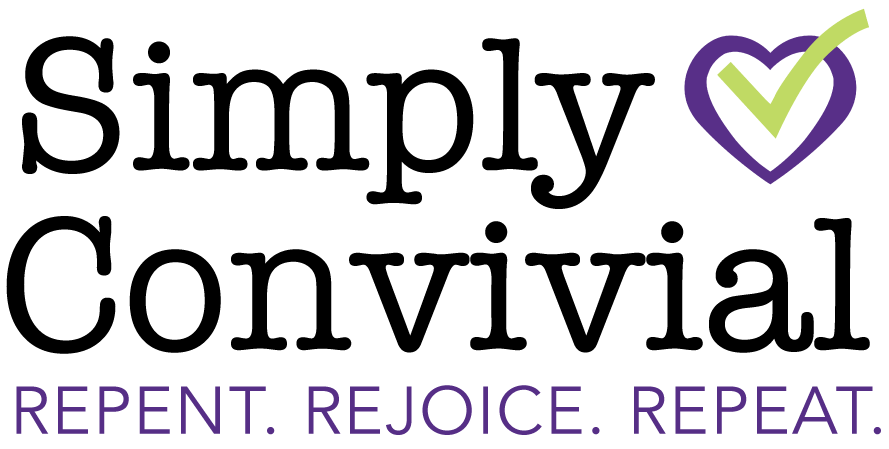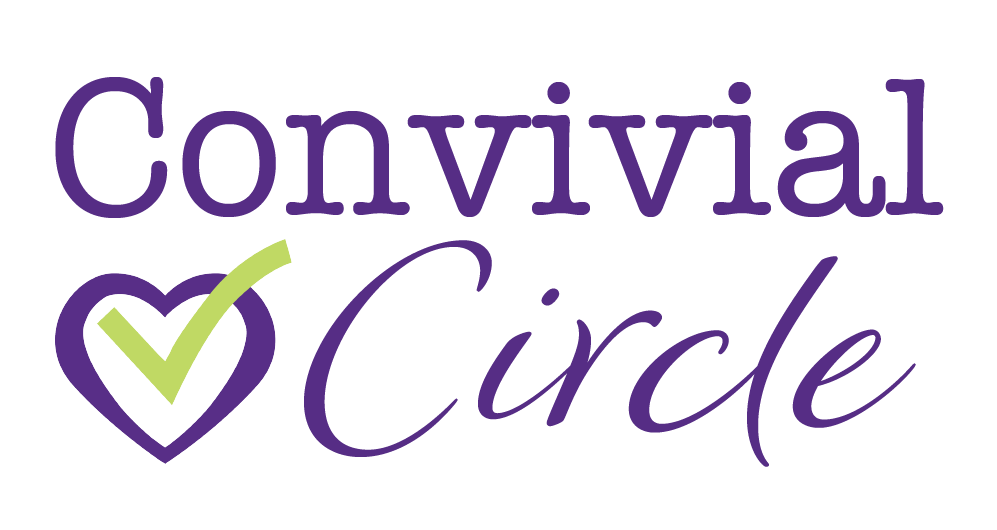

Writing out the things each week helps. When we get to school time, I sometimes use a wet erase marker for the things that stay the same each week. The second board gets used for whatever is needed – currently kid jobs, sometimes brain dump, running to do, etc.
Sarah Nelson, Simply Convivial Member


I’ve a good Weekly Dashboard going for a long time… before it was called a Dashboard even… back when it was called the Weekly Overview {sheet}.
Stefani Mons, Simply Convivial Member


Our scheduled activities are few right now, so I just list those in the “tasks for this week” section. I can foresee a season coming where I will need more structure to keeping track of scheduled activities.
Mama Rachael, Simply Convivial Member


I’m hoping to figure out a better system this month. I’m using a large calendar with this week view and month view. I’m tracking a few things daily but it’s sort of turning into a big to do list. The sticky note is thinks to do this week that are not set on time/date. Maybe I need a separate weekly dashboard page? Trying to keep it simple and all in one place.
Julie Quates, Simply Convivial Member


This is my dashboard. I put my daily top 3 and menu plan on the fridge white board, but they could easily be added.
Karen Head, Simply Convivial Member


I don’t make many notes on the dashboard, but I do draw lines down the middle of the calendar pages and use the right side for notes, tasks, etc. And school planning is entirely separate. I also use a Day-At-A-Glance planner – a week on two pages – for my calendar.
Susie Everett, Simply Convivial Member


Here’s my dashboard. It’s on the wall near a central point in the house where I pass by frequently. The whiteboard daily categories (daily card, food, to-do today, events/activities, looking ahead to next week) are supplemented by my printed weekly sheet (top 3, list of tasks for the week, declutter/clean priorities, list of events, reading and/or community coaching goals.) I also used to have my morning/evening routines listed, but ran out of space. I might need to add that back as I switch things up for the new school interval. Not shown but also pinned to the board are a habit tracker and an alignment sheet. As you can see, I have some simple color coding to help me visually – orange for priorities, green for food, black & blue for everything else.
Anna Laura, Simply Convivial Member


Abby Wahl, Simply Convivial Member


Heather Roche, Simply Convivial Member


I keep mine on a clipboard and it has various homes throughout the day, but normally stays on what I call “my desk” I use it to keep my top three in front of me, a running task list, a quick at glance calendar commitments, my daily top three, and to track some routines. I may adjust it for fall, this is what worked well over the summer. On the bottom I keep track of where I’m at in my interval.
Amanda Sewell, Simply Convivial Member


I made my in excel. I use shorthand, like a box for my workouts, and “sh” for my Ka’Chava protein shake, and a heart for evening examen & weekly reviews. ???? I borrowed from Stefani & others to start out.
Christine Nash, Simply Convivial Member


My current dashboard in Bullet Journal. Left page is my weekly review with symbols that indicate action required; right page is the dashboard with top three broken down. Next two pages contain seven daily cards and an eighth box for my habit tracker. From weekly review, things that move to a daily card get checked off. It’s just me, so I don’t have other people’s stuff to fit in.
Denise Luck, Simply Convivial Member



Added this to my dashboard—spot for my daily card, but the hack is I peeled 5 post its off the pad (in one chunk) and put the whole mini stack on my dashboard so I have it ready and in place for the next day!
Aly Silva, Simply Convivial Member


This is my bullet journal “dashboard”, although I don’t have a couple things on there that I’d like to have but I’m okay with it because I’m iterating :) I struggled with the size of the layout at first because it’s a smaller journal but now I’m finding it helped me learn to keep my boxes small and my expectations of myself more reasonable. Now I know that when I upgrade to a bigger one (my gift to myself when I finally fill a whole journal for the first time!!) I want to keep the daily boxes the same size and just add whatever trackers and things around it
Christie Betancourt, Simply Convivial Member


I color in the flowers each time I actually LOOK at my plan for the day. I print it off each week as I’m doing my weekly review. Then I add to it as the week progresses. I change and adjust things each week to help it “fit” what’s going on.
Jen Wickstrum, Simply Convivial Member
I use a monthly calendar that I print off and keep behind this page. I don’t really have a running task list right now. I use post-it’s like they are going out of style ???? It’s a system that needs improvement… but I’m still iterating.


I did it! I had a 8×11 spiral notebook on hand so use both pages for my weekly dashboard. Thank you for all the samples, they were very helpful.
Leanna Anderson, Simply Convivial Member


I have to write everything out each week to cement it all in my brain, so it works really well for me. And the green is sticky notes for my daily cards. Right now in this season of life I definitely need simple and to the point
Chantelle Koontz, Simply Convivial Member


Here’s the one I’ve been using for about 6 months
Megan Hillegass, Simply Convivial Member


I have been using variations of this for a while now. After getting some tips the last 2 weeks from everyone here I worked this up today. I’m trying to learn how to simplify. I used to have task lists that were labeled by vocation but those have never served me well because they didn’t always reflect what was actually going on in my week. I switched it up and worked up a task list more by type and when I have set times to do them. I also usually keep my weekly dashboard in my planner that gets tossed to the side and never looked at. I’m playing with a simple clip board instead. I plan to use a sticky note for my daily top 3. I know the bonus isn’t the perfect Top 3 format but I’ve been doing it for a while and it works for me. There’s no pressure to get it done but I actually tend to push to get more of my top 3 done if I add the bonus. Why that is though I have no idea.
Lindsay, Simply Convivial Member


A working first draft of a dashboard in my journal. I was starting to keep too many notebooks/ clipboards, had to simplify it down to one
Trisha Leger, Simply Convivial Member


This has been so helpful to think through what actually needs to be on my dashboard. I tend toward too minimalist sometimes because I’m afraid I’ll over clutter it. I just have an alignment quote, my weekly view, top 3, am/pm habits, cleaning loop and this time I write my interval list since it’s the first week of the interval.
Rena Sites, Simply Convivial Member


I like to draw my dashboards, because I like to use cardstock for durability and just tactile enjoyment. I often do my menu plan along the bottom of the days, but I didn’t get to it this week. I have been experimenting with decorating them or leaving them basic. The jury is still out on which I prefer. I might move the decorating to my homeschool records page, because my brain doesn’t love having to sort through the decorations to get to the content.
Cassie Spurlock, Simply Convivial Member


Current iteration of my weekly digital dashboard – lives on my computer which is usually open either on the kitchen counter or the buffet table nearby.
Laura Hibberd, Simply Convivial Member


My dashboard. I bought the file from Etsy for a few dollars and print it n half letter paper for my discbound. I print 8 at a time for my interval so I don’t have to print them each week. The small squares actually keep me from filling in too much in my days/week. :)
Jess Smith, Simply Convivial Member


My dashboard and where it lives.
Leann Erickson, Simply Convivial Member


This is my current dashboard though it changes all the time. This is an 8.5×11 teacher planner that I make work for me. I’m forever switching how I use the various sections. Right now, at the top I have a place to write a verse or quote for the day. The next section is my top 3 for the day. In the middle I have a tracker for my habits. Next to last I have left a place for personal projects or other things I may want to track. The bottom section I use for writing down what tasks I need to do to prep for meals or notes to make about my meals. At the left I list my weekly top 3 as well as things I’d like to get done during the week. The sticky note is for my ubiquitous capture…it moves around as I fill out the week.
Christina S, Simply Convivial Member


Here’s my weekly dashboard….they I have obviously not filled out this week. I put appointments and menu on the vertical side bar, and tasks/chores/top three on the right. I don’t use that tracker thing. Ideally, I would track my habits, but I can’t seem to ever be successful with it
Cathy Leblanc, Simply Convivial Member


This is what a “used” version of my week looks like. I’m just under the wire for our monthly topic of dashboards. This demonstrates a technique I sometimes use for project post its or extra lists. I stack them and then title them at the bottom for easy reference. I’m looking forward to my actual planner arriving this week, as you can tell this is a printout pasted into an existing notebook. Printing out a sample copy is a technique I ALWAYS use before even considering a new planner. I usually try to use it for at least a month or two unless the planner is extremely cheap or fairly similar to what I a currently using. I highly recommend this for people who are switching planners or are new to purchasing planners.
Victoria Graf, Simply Convivial Member


Weekly dashboard
Lori, Simply Convivial Member
- Get gospel-focused advice and encouragement.
- Level up your plans and progress, one step at a time.
- Find accountability with likeminded women without any social media drama.
- Experience the homemaking mentoring you’ve always wanted.
- Learn to love being a homemaker!

